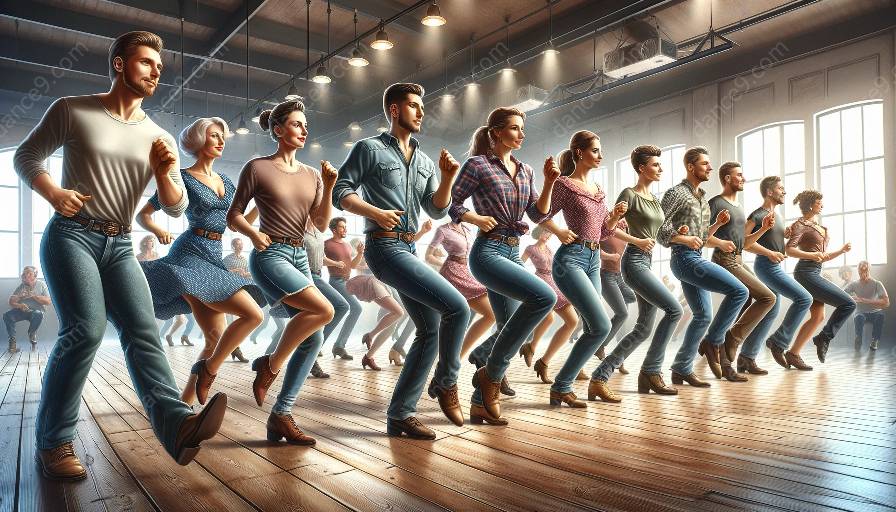Line dancing has a rich and diverse historical background, reflecting the evolution of cultural traditions and social movements. Originating from various folk dance practices around the world, line dancing has become a popular form of dance expression and exercise in modern times. Let's explore the fascinating history of line dancing, its cultural significance, and its journey to becoming a staple in dance classes.
Origins in Folk Traditions
The roots of line dancing can be traced back to ancient folk traditions in different parts of the world. In Europe, the practice of dancing in lines can be seen in traditional folk dances such as the quadrille from France, the jig from Ireland, and the hora from Eastern Europe. These dances often involved individuals forming lines and performing synchronized movements to music, reflecting the communal and celebratory nature of these traditional gatherings.
Similarly, in the Americas, indigenous cultures and early settlers contributed to the development of line dancing. Indigenous peoples had their own forms of group dance, and European colonizers brought their own dance traditions, which eventually influenced the evolution of line dancing in the Americas.
Evolution and Cultural Significance
As societies evolved and cultures intermingled, line dancing underwent a process of evolution, blending different traditions and styles to create new forms of communal dance. Line dancing became a way for people to come together, celebrate, and express their cultural identity through movement and music. Whether in the context of community gatherings, social events, or religious ceremonies, line dancing played a significant role in fostering a sense of community and collective spirit.
Line dancing also carried social and historical significance, serving as a means of storytelling and preserving cultural heritage. Through intricate choreography and rhythmic patterns, line dances conveyed narratives, rituals, and shared experiences, making them an integral part of cultural storytelling and oral traditions.
Transition to Modern Era and Dance Classes
With the advent of modern transportation and communication, line dancing experienced a renaissance as it spread across the globe. The 20th century saw the popularization of line dancing through various mediums, including film, television, and popular music. With its accessibility and inclusive nature, line dancing became a staple in social gatherings and recreational activities.
Today, line dancing continues to thrive as a popular form of dance expression and exercise. It has also found a place in formal dance classes and fitness programs, attracting people of all ages and backgrounds. Dance classes focused on line dancing offer participants the opportunity to learn and master various line dances, while also promoting physical fitness, coordination, and social interaction.
Conclusion
In conclusion, the historical origins of line dancing are deeply rooted in the rich tapestry of cultural traditions from around the world. From its humble beginnings in folk traditions to its modern-day presence in dance classes, line dancing has evolved into a global phenomenon that embodies the spirit of community, cultural expression, and celebration. Its journey through history reflects the resilience and adaptability of dance as a universal form of human expression.













































































